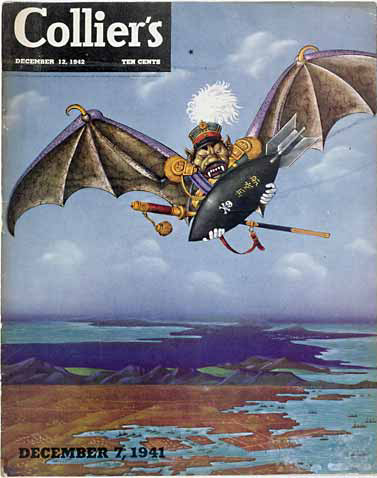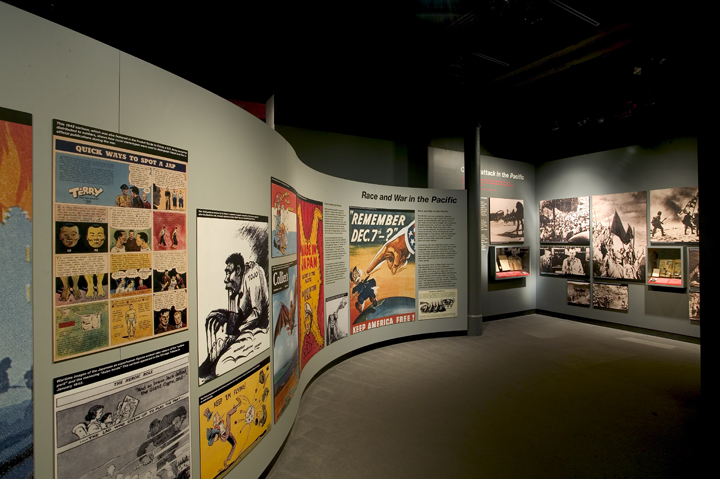Inside the Exhibits – Race & War

December 12, 2012 marks the 70th anniversary of the Collier’s magazine cover (left) depicting Tojo as a winged vampire bat about to bomb Pearl Harbor. The magazine commemorated the one-year anniversary of the attack. This image is featured in the Museum’s Race & War exhibit in the D-Days Invasions in the Pacific gallery. In this exhibit, visitors see how both sides used caricature-like depictions of the enemy in an effort to both dehumanize their foes and inflate their own sense of nationalism. It is our hope that this exhibit will start a conversation about the harshness of war and views of race.
Race & War in the Pacific Exhibit
The Pacific war was marked by intense hatred. American anger over the surprise attack on Pearl Harbor and Japan’s belief that America wanted to cripple her economy and threaten her survival contributed to these feelings. Race also had a role. To an unusual degree, the Pacific war was characterized by racial stereotyping and demonization of the enemy. The war exposed racial pride, prejudices and anger. Propaganda on both sides reflected a strong strain of racial hatred.
In America, the war inflamed deeply rooted views of Asians as racially inferior. The media frequently portrayed the Japanese threat in racial terms. Japanese atrocities and the fact that many Japanese soldiers chose death over surrender seemed to confirm prejudices about the subhuman and irrational nature of the enemy.
The Japanese view of Americans was also influenced by race, but in a different way. While Western racism was marked by denigration of others, the Japanese were more preoccupied with elevating themselves. Japan’s leaders attributed unique spiritual virtues and physical “purity” to the “Yamato race.” The Japanese were the world’s “leading race” – morally and genetically purer than others. Americans and other Westerners were pictured as degenerate beasts and demons.

Race & War exhibit at The National WWII Museum

(Left) Race & War exhibit at The National WWII Museum - Japan Views the Enemy. (Right) Wartime Japanese cartoons often depicted the purging of corrupt Western ideas. in this graphic, Japan is pictured as a woman combing her hair. The dandruff falling from her head represents Anglo American influences - including extravagance, selfishness, liberalism, materialism and individualism.
- Posted :
- Post Category :
- Tags :
- Follow responses to this entry through the RSS 2.0 feed. You can skip to the end and leave a response. Pinging is currently not allowed.




Leave a Reply